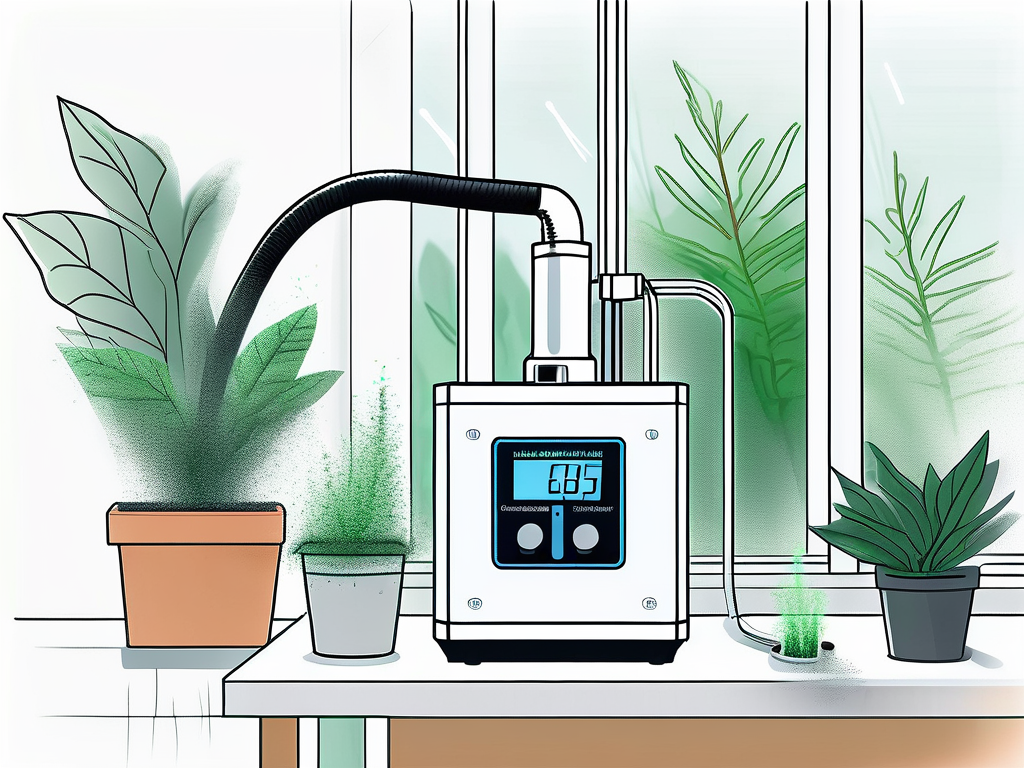Air quality is a critical aspect of our environment that often goes unnoticed. Yet, it plays a significant role in our health and well-being. Understanding what air quality is and its importance is the first step towards ensuring a safe and healthy living environment for ourselves and our loved ones.
Understanding Air Quality: Basics and Beyond
What is Air Quality?
Air quality refers to the condition of the air that surrounds us. It is determined by the presence of various pollutants, including gases, particulate matter, and biological contaminants. These pollutants can originate from both natural and human-made sources.
Common pollutants found in the air include carbon monoxide, nitrogen dioxide, ozone, fine particles, and volatile organic compounds. Monitoring and maintaining good air quality is essential for our health and the environment.
Particulate matter (PM) is a significant component of air pollution and is categorized based on size. PM10 includes particles with a diameter of 10 micrometers or smaller, while PM2.5 consists of even finer particles with a diameter of 2.5 micrometers or smaller. These particles can penetrate deep into the lungs and even enter the bloodstream, posing serious health risks.
Why is Air Quality Important?
Poor air quality can have severe consequences on our health, both in the short term and long term. Exposure to polluted air can lead to respiratory problems, such as asthma, allergies, and chronic obstructive pulmonary disease (COPD).
Moreover, studies have shown that long-term exposure to polluted air increases the risk of developing cardiovascular diseases, lung cancer, and other serious health conditions. Children, older adults, and individuals with pre-existing health conditions are particularly vulnerable.
Ground-level ozone, a key component of smog, is formed when pollutants from vehicles, industrial facilities, and other sources react in the presence of sunlight. Ozone can trigger a variety of health problems, including chest pain, coughing, throat irritation, and airway inflammation. Prolonged exposure to ozone can worsen bronchitis, emphysema, and asthma, leading to increased hospital admissions and emergency room visits.
The Science Behind Air Quality Testing
The Role of Pollutants in Air Quality
Pollutants are substances or energy forms that contaminate the air and have harmful effects on living organisms. The presence of pollutants in the air affects its overall quality. Understanding the types of pollutants and their sources is crucial for effective air quality testing.

Primary pollutants are released directly into the air from sources such as industrial emissions, vehicle exhaust, and burning of fossil fuels. Secondary pollutants are formed through chemical reactions in the atmosphere, such as the transformation of gases into fine particles.
It is important to note that pollutants can vary in size, composition, and behavior, influencing their impact on air quality and human health. For example, particulate matter, a common air pollutant, consists of tiny particles suspended in the air that can penetrate deep into the lungs when inhaled, leading to respiratory issues and other health problems.
How Air Quality is Measured
Air quality is measured using instruments that detect and quantify the concentration of various pollutants. These instruments include gas analyzers, particulate matter monitors, and meteorological sensors. Monitoring stations are strategically placed in different locations to gather data on air quality.
The collected data is then analyzed to determine pollutant levels, identify sources of contamination, and assess health risks. Air quality index (AQI) is often used to simplify the measurement and reporting of air quality, providing the public with easily understandable information.
Furthermore, advancements in technology have led to the development of portable air quality monitors that individuals can use to track pollution levels in their immediate surroundings. These devices offer real-time data on pollutants, empowering people to make informed decisions to protect their health and well-being.
Health Implications of Poor Air Quality
Short-term Health Effects
Exposure to poor air quality can have immediate health effects. Individuals may experience respiratory symptoms such as coughing, wheezing, and shortness of breath. Irritation of the eyes, nose, and throat is also common. These symptoms can be particularly troubling for people with respiratory conditions like asthma.

Additionally, poor air quality can trigger allergies, worsen existing respiratory conditions, and lead to increased hospital admissions and emergency room visits. The severity of these short-term health effects depends on the level and duration of exposure to pollutants.
It is important to note that short-term exposure to poor air quality can also have neurological effects. Studies have shown a correlation between air pollution and cognitive impairment, especially in children and older adults. This can manifest as decreased cognitive function, memory problems, and even an increased risk of neurodegenerative diseases.
Long-term Health Effects
Long-term exposure to polluted air poses serious health risks. Respiratory diseases, cardiovascular diseases, and lung cancer are among the long-term health effects associated with poor air quality.
Research has shown that long-term exposure to fine particles and other pollutants can contribute to the development of chronic respiratory conditions, including COPD and lung cancer. Furthermore, cardiovascular diseases such as heart attacks and strokes are more prevalent in areas with high levels of air pollution.
Moreover, prolonged exposure to poor air quality can have systemic effects on the body beyond respiratory and cardiovascular issues. Studies have linked air pollution to adverse effects on the skin, such as premature aging, skin allergies, and exacerbation of skin conditions like eczema and psoriasis. The pollutants in the air can penetrate the skin, leading to oxidative stress and inflammation, which can accelerate skin aging and damage its protective barrier.
Improving Indoor Air Quality
Common Sources of Indoor Air Pollution
Indoor air pollution can be just as harmful as outdoor air pollution, if not more so, as we spend a significant amount of time indoors. Identifying and addressing common sources of indoor air pollution is essential for maintaining good air quality at home.

Sources of indoor air pollution include combustion processes (e.g., cooking and heating), tobacco smoke, building materials, cleaning products, and household pests. Proper ventilation and regular maintenance of HVAC systems are crucial for preventing the buildup of pollutants indoors.
Moreover, indoor air pollution can also originate from everyday activities such as using certain types of candles, air fresheners, and even cooking on non-stick cookware. These seemingly harmless actions can release volatile organic compounds (VOCs) into the air, contributing to indoor air pollution levels.
Steps to Improve Indoor Air Quality
There are several steps individuals can take to improve indoor air quality. First and foremost, proper ventilation is crucial. Opening windows and using exhaust fans can help circulate fresh air and remove indoor pollutants.
Reducing or eliminating the use of tobacco indoors, choosing eco-friendly cleaning products, and regularly cleaning carpets and upholstery can also make a significant difference. Additionally, using air purifiers with HEPA filters can help remove airborne allergens and particles.
Furthermore, incorporating houseplants known for their air-purifying properties, such as spider plants, peace lilies, and aloe vera, can naturally enhance indoor air quality. These plants not only add a touch of greenery to your living space but also act as natural air filters, absorbing harmful toxins and releasing oxygen into the air.
Air Quality Testing: Professional vs DIY
When to Hire a Professional
While some indoor air quality improvements can be made through simple measures, there are instances where it is best to hire a professional air quality testing service.
If you suspect mold growth, asbestos, or other hazardous materials in your home, it is crucial to seek professional assistance. These professionals have the necessary expertise and equipment to conduct thorough testing and provide accurate results.
Professional air quality testing services employ highly trained technicians who have a deep understanding of indoor air pollutants and their potential health effects. They are equipped with state-of-the-art instruments that can detect even the smallest traces of harmful substances. By hiring a professional, you can have peace of mind knowing that your home’s air quality is being assessed by experts who will provide you with detailed and reliable information.
DIY Air Quality Testing: Pros and Cons
For those who want to get a general idea of their indoor air quality, DIY air quality testing kits are available in the market. These kits allow individuals to collect samples and send them to a laboratory for analysis.
DIY testing kits can be a cost-effective option for initial screening, especially if you are curious about the overall air quality in your home. They provide a convenient way to gather samples and send them off for analysis. However, it’s important to note that these kits may not be as accurate or comprehensive as professional testing.
Interpreting the results of a DIY air quality test can be challenging without the necessary knowledge and expertise. Different pollutants have different health implications, and understanding the significance of each result requires a deep understanding of air quality science. Without professional guidance, you may misinterpret the results and make incorrect assumptions about the safety of your indoor environment.
Furthermore, DIY testing kits may not be able to detect certain types of pollutants or provide detailed information about their concentrations. They are often limited to measuring a few common pollutants, such as particulate matter or volatile organic compounds, and may not capture the full picture of your indoor air quality.
In conclusion, air quality testing is a crucial aspect of maintaining a safe and healthy living environment. Understanding the basics of air quality, the science behind testing, and the health implications of poor air quality can empower individuals to take the necessary steps in improving the air they breathe. Whether it’s monitoring pollutant levels, improving indoor air quality, or seeking professional assistance, knowledge is the key to ensure the well-being of ourselves and our loved ones.




